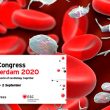Acute myocardial infarction (AMI) continues to be a clinically significant condition due to its association with morbidity and mortality after the initial event. Therefore, the prognostic stratification of these patients is of vital importance. One of the tools that have been used for several years for this purpose is the SYNTAX I (SS) and SYNTAX<a href="https://solaci.org/en/2023/09/25/prognostic-impact-of-syntax-and-syntax-ii-scores-in-patients-with-acute-myocardial-infarction/" title="Read more" >...</a>
Mitral Valve Edge to Edge Repair for Papillary Muscle Rupture after Acute Myocardial Infarction
With an approximate incidence of 0.05% to 0.25%, post-acute myocardial infarction (AMI) mitral valve failure caused by papillary muscle rupture is not exactly common. However, it is associated to high mortality rate, ranging between 36% and 80%. Current guidelines recommend surgical treatment, but more often than not surgery involves prohibitive or extremely high risk, with<a href="https://solaci.org/en/2023/07/14/mitral-valve-edge-to-edge-repair-for-papillary-muscle-rupture-after-acute-myocardial-infarction/" title="Read more" >...</a>
What Is the Prognosis of an Acute Myocardial Infarction in the Presence of Moderate Aortic Stenosis?
Aortic stenosis (AS) is a common condition that shares risk factors with coronary artery disease. Many patients can suffer from both diseases simultaneously, something that increases the risk of acute myocardial infarction in the presence of aortic stenosis. AS can cause ischemia even in the absence of coronary artery disease, due to ventricular hypertrophy, increased<a href="https://solaci.org/en/2023/07/12/what-is-the-prognosis-of-an-acute-myocardial-infarction-in-the-presence-of-moderate-aortic-stenosis/" title="Read more" >...</a>
Association Between Radial Wall Strain (RWS) and Risk of Acute Myocardial Infarction
Despite major advances in secondary prevention and reperfusion strategies, acute myocardial infarction (AMI) still causes morbidity and mortality. A significant portion of acute events arise from mild to moderate lesions identified months to years before the index event. Early detection of lesions at higher risk of progression and rupture may allow for more targeted treatment<a href="https://solaci.org/en/2023/06/09/association-between-radial-wall-strain-rws-and-risk-of-acute-myocardial-infarction/" title="Read more" >...</a>
Re-Watch Coronary Bifurcation Angioplasty in Acute Myocardial Infarction
You can now relive our virtual event on Coronary Bifurcation Angioplasty in Acute Myocardial Infarction. Coronary Bifurcation Angioplasty in Acute Myocardial Infarction
ST Elevation Acute Myocardial Infarction Management in Latin America: A Survey
We are glad to invite the entire Latin American community to make part of this survey aimed at collecting data on the quality of ST elevation MI management in Latin America. It will take just 5 minutes of your time, is totally anonymous, and will contribute to the better understanding of the different treatment realities<a href="https://solaci.org/en/2022/03/15/st-elevation-acute-myocardial-infarction-management-in-latin-america-a-survey/" title="Read more" >...</a>
ESC 2020 | Acute Myocardial Infarction and Anemia: Are Transfusions Necessary?
In anemic patients undergoing acute myocardial infarction, a restrictive transfusion strategy is as safe as a more liberal approach, in addition to saving costs. The cutoff value to decide for a transfusion would be < 8 g/dl hemoglobin. The REALITY outcomes were presented during the virtual ESC 2020 sessions. Anemia is relatively common in patients<a href="https://solaci.org/en/2020/09/09/esc-2020-acute-myocardial-infarction-and-anemia-are-transfusions-necessary/" title="Read more" >...</a>
Is Complete Revascularization the Right Choice in Acute Myocardial Infarction with Multivessel Disease?
Courtesy of Dr. Carlos Fava. Primary coronary angioplasty has been the treatment of choice for acute myocardial infarction (MI) for many years, but such strategy is associated with nonculprit lesions in a large group of patients. While it has been proven that nonculprit-lesion revascularization offers better outcomes, the groups that would benefit from it are<a href="https://solaci.org/en/2019/09/13/is-complete-revascularization-the-right-choice-in-acute-myocardial-infarction-with-multivessel-disease/" title="Read more" >...</a>
Maintaining Physical Activity After an Acute Myocardial Infarction Reduces Mortality
Performing a successful primary angioplasty and prescribing preventive medication without advising on the importance of keeping up with or taking up physical activity is a waste of one of our many opportunities to improve the quality of life of our patients and reduce mortality among them. If clinical cardiologists do not take over the patient,<a href="https://solaci.org/en/2018/05/17/maintaining-physical-activity-after-an-acute-myocardial-infarction-reduces-mortality/" title="Read more" >...</a>
CTO in patients with acute myocardial infarction increases long term mortality
Courtesy of Dr. Carlos Fava. It has been proved that in a setting of acute myocardial infarction with multivessel lesions, only the culprit vessel must be treated (if there is no hemodynamic compromise) at first, and other severe lesions are to be treated during a second session. However, proper conduct in cases with presence of chronic<a href="https://solaci.org/en/2017/06/29/cto-in-patients-with-acute-myocardial-infarction-increases-long-term-mortality/" title="Read more" >...</a>








